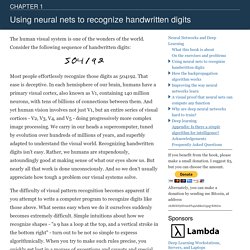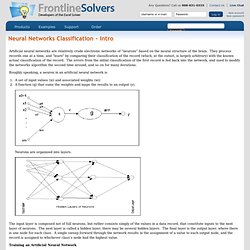

Artificial Neural Networks, Algorithms, tutorials and sofware. RSNNS – R is my friend. In my last post I said I wasn’t going to write anymore about neural networks (i.e., multilayer feedforward perceptron, supervised ANN, etc.).

That was a lie. I’ve received several requests to update the neural network plotting function described in the original post. As previously explained, R does not provide a lot of options for visualizing neural networks. The only option I know of is a plotting method for objects from the neuralnet package. This may be my opinion, but I think this plot leaves much to be desired (see below). As usual, I’ll simulate some data to use for creating the neural networks. The various neural network packages are used to create separate models for plotting.
I’ve noticed some differences between the functions that could lead to some confusion. Specifics aside, here’s how to use the updated plot function. The neural networks for each model are shown above. I have also added five new arguments to the function. Cheers, Marcus.
Deep Learning and Neural Networks. Advanced Research Seminar I/III Graduate School of Information Science Nara Institute of Science and Technology January 2014 Instructor: Kevin Duh, IS Building Room A-705 Office hours: after class, or appointment by email (x@is.naist.jp where x=kevinduh) Course Description Deep Learning is a family of methods that exploits using deep architectures to learn high-level feature representations from data.

Recently, these methods have helped researchers achieve impressive results in various fields within Artificial Intelligence, such as speech recognition, computer vision, and natural language processing. Prerequisites: basic calculus, probability, linear algebra. Course Schedule Jan 14, 16, 21, 23 (9:20-10:50am) @ IS Building Room L2 Two video options are available: [1] Video (HD) includes slide synchronization and requires Adobe Flash Player version 10 or above. [2] Video (Youtube) may be faster to load and is recommended if you have trouble with Video (HD). Useful References. Neural networks and deep learning. The human visual system is one of the wonders of the world.

Consider the following sequence of handwritten digits: Most people effortlessly recognize those digits as 504192. That ease is deceptive. In each hemisphere of our brain, humans have a primary visual cortex, also known as V1, containing 140 million neurons, with tens of billions of connections between them. And yet human vision involves not just V1, but an entire series of visual cortices - V2, V3, V4, and V5 - doing progressively more complex image processing. The difficulty of visual pattern recognition becomes apparent if you attempt to write a computer program to recognize digits like those above.
Neural networks approach the problem in a different way. And then develop a system which can learn from those training examples. In this chapter we'll write a computer program implementing a neural network that learns to recognize handwritten digits. An Introduction to Neural Networks. Prof. Leslie Smith Centre for Cognitive and Computational Neuroscience Department of Computing and Mathematics University of Stirling. lss@cs.stir.ac.uk last major update: 25 October 1996: minor update 22 April 1998 and 12 Sept 2001: links updated (they were out of date) 12 Sept 2001; fix to math font (thanks Sietse Brouwer) 2 April 2003 This document is a roughly HTML-ised version of a talk given at the NSYN meeting in Edinburgh, Scotland, on 28 February 1996, then updated a few times in response to comments received.
Please email me comments, but remember that this was originally just the slides from an introductory talk! Why would anyone want a `new' sort of computer? What is a neural network? Some algorithms and architectures. Where have they been applied? What new applications are likely? Some useful sources of information. Some comments added Sept 2001 NEW: questions and answers arising from this tutorial. Intro to Neural Networks Classification. Artificial neural networks are relatively crude electronic networks of "neurons" based on the neural structure of the brain.

They process records one at a time, and "learn" by comparing their classification of the record (which, at the outset, is largely arbitrary) with the known actual classification of the record. The errors from the initial classification of the first record is fed back into the network, and used to modify the networks algorithm the second time around, and so on for many iterations.
Roughly speaking, a neuron in an artificial neural network is A set of input values (xi) and associated weights (wi)A function (g) that sums the weights and maps the results to an output (y). Neurons are organized into layers. The input layer is composed not of full neurons, but rather consists simply of the values in a data record, that constitute inputs to the next layer of neurons.
Training an Artificial Neural Network The Iterative Learning Process. Lecture 08: Classification with Neural Networks - Course: Document & Content Analysis.